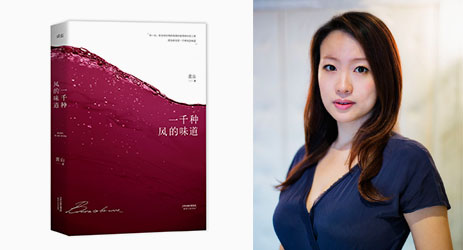Demei's View - Wine Communication from a Chinese Winemaker
I was chatting with a friend the other day about how to promote wines in China. She said with deep feeling that the popular promotional activities such as tasting events, wine dinners and winery tours were sufficient a few years ago, but are difficult to be groundbreaking now. For the past several years, we always saw the same familiar faces of wine lovers, enthusiasts, educators, critics, journalists, and even distributors at various wine events. The only difference might be the company they worked for. Thus, a new subject for the wine producers and importers is how to attract new clients and expand the consumer groups.

The discovery of the scientific evidence of ‘drinking wine is good for health’ at the end of last century has greatly enhanced the consumption of wine in the United States, then led to a new round of development of the wine consumption in China. In the autumn of 2004, the release of the film Sideways brought another boom of wine drinking and wine tourism in the US – especially the passion for Pinot Noir among the American consumers. Later on, it also influenced the consumers in other countries – at least in China. The main location of the film was Santa Ynez Valley in Santa Barbara County, California. The distinctive villages, narrow and rolling highways, vineyards full of lights and shadows, and the prestigious wineries were intoxicating. The leading characters were normal people in our daily life; although the story line was not mind-blowing, it was easy to resonate with the audience.
Wine is the fifth ‘main actor’ in the film along with the four leading characters. There are so many wine grapes around the world, and each grape variety makes wine with unique personality – the full-bodied and tannic Cabernet Sauvignon, aromatic and flavoursome Chardonnay, fresh and fragrant Sauvignon Blanc all appeared in the film. However, Merlot that was popular in the American wine market, was set to be the ‘villain’ of the story. One of the main characters, Miles, had a bias for Pinot Noir, so whenever he praised Pinot Noir, he always depreciated Merlot. As a result, this film caused a spending spree for Pinot Noir in the American wine scene (of course the widely loved Merlot was not affected).
The promotional role Sideways played in the wine world became an extraordinary learning curve. Even now there are people following the example to make films with the theme of wine.
Recently a Chinese wine novel Born to be Wine was published and led to heated discussion. The subject matter is light and clever: the principal line is about the overseas life and love story of a heroine who aspires to be a top-level winemaker.
The author HUANG Shan went to study abroad when she was young, and has experienced herself what the heroine experienced in the story, such as wine, gourmet, travel, even equestrian. Because of this, the story is very attractive to the younger generation who are pursuing quality lifestyle, especially to those who are going to study abroad or have already been living abroad.
HUANG Shan is a WSET Diploma graduate and a Master of Wine candidate. She interspersed a lot of wine knowledge in the story and defined the wine terms in an easy-to-understand and accurate way. For people who are familiar with wine, they would admire the author’s exquisite and delicate writing and her ability to interweave the wine knowledge in the novel; for those who don’t know much about wine, they are gradually sent into the wine world whilst following the story of the heroine.
The story ends in San Juan at the foothills of the Andes. The special topography of the region causes a cyclone called ‘a thousand kinds of wind’. ‘The cyclone comes from the top of the mountain, from the cloud, from the forest, from all directions. It travels with different aroma molecules; wherever it stops, it will bring the flavour of a thousand kinds of wind to the place. Nobody knows where the wind has passed on its journey, just like nobody could predict and copy the wines we are going to taste,’ HUANG wrote. This exactly echoes the regional characteristics and the diversity of wines. Even if you don’t see it in this way, you can still enjoy the story.
(Translated by Nina Fan Feng)
Translated by Nina Fan Feng / 冯帆
All rights reserved by Future plc. No part of this publication may be reproduced, distributed or transmitted in any form or by any means without the prior written permission of Decanter.
Only Official Media Partners (see About us) of DecanterChina.com may republish part of the content from the site without prior permission under strict Terms & Conditions. Contact china@decanter.com to learn about how to become an Official Media Partner of DecanterChina.com.


Comments
Submit